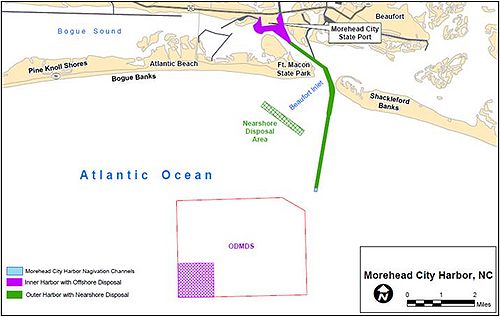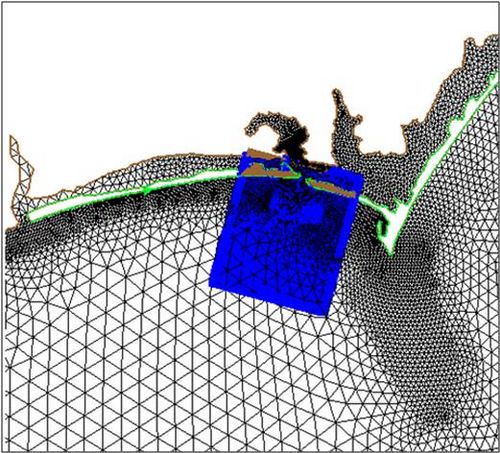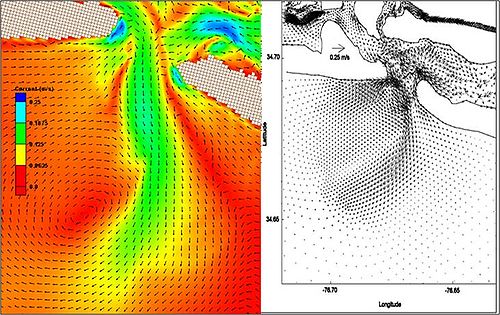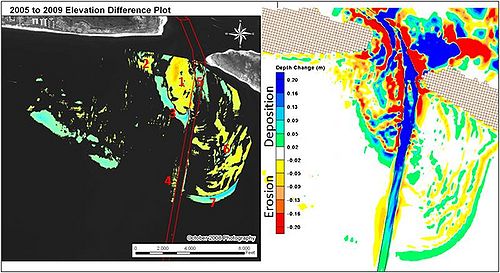Beaufort Inlet
UNDER CONSTRUCTION
Project Objectives

The CMS models were used to simulate the 2-D circulation, wave transformation and sedimentation at the Beaufort Inlet area to understand the sediment movement within the inlet complex system. The models will be used to examine different scenarios for potential dredged material disposal sites in the area.
Model Setup

The regional tidal circulation in the area was evaluated with ADCIRC model. The nearshore details were deleted and a new grid with minimal details and lower resolution was created and was appended to the original grid.

Discussion

The CMS residual current and the ADCIRC residual circulation (Luettich et. al., 1999) show good resemblance with an offshore flow in the inlet channel and nearshore flow toward the inlet. A large recirculation zone appears to the west of the inlet. The structure of the residual field suggests that a plume exiting the inlet would tend to move offshore, to the west, and might be re-entrained along the western side of the inlet. In the inlet throat, the residual flow is offshore on the western side of the inlet and onshore on the eastern side of the inlet (Luettich et. al., 1999).

The 7-m (MTL) contour during 1974, 1998 and 2009 indicated that the natural deep channel areas eroded drastically and the delta west offshore bar encroached onto the west channel bank while the delta east offshore bar was pushed further offshore. Modeled ebb current vectors suggested that the ebb jet was pushing the sediment offshore and moving the ebb shoal further offshore. The modeled residual sediment transport patterns in the inlet area agreed with previous studies. Olsen (2006) stated that there is net westerly-directed littoral drift (east to west transport potential) along both Shachleford Banks and Bogue Banks. There is a localized reversal in net transport along the eastern 2.4 miles of Bogue Banks where the net transport potential is directed toward the inlet (west to east) in the lee of the inlet’s ebb shoal.
The measured depth change (2005 and 2009 surveys) and the modeled morphology change (one month) were compared. The numbered areas depict where the model was capable of reproducing similar erosion and deposition patterns. In general, only qualitative comparison should be considered due to the fact of different periods.
References
Luettich, R., A., Hench, J., Fulcher, C., Werner, F., Blanton, B., Churchill, J., 1999. Barotropic tidal and wind-driven larval transport in the vicinity of a barrier island inlet. Fisheries Oceanography, vol. 8, 190-209.
Olsen Associates, Inc. , 2006. Regional Sand Transport Study: Morehead City Harbor, Federal Navigation Project. Report prepared for Carteret County Board of Commissioners, Carteret County, North Carolina. Olsen Associates Inc., 4438 Herschel Street, Jacksonville FL 32210.
Project information provided from Wilmington District by Layla Kashlan